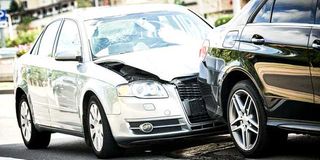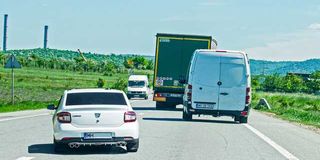
Speed might determine how much damage gets done, but it is not the cause of the crash.
Your recent article on road safety suggesting “if we want the right answers we must ask the right questions” got to the very heart of our road transport challenges. The “answer” our policy makers and administrators have always given us is that the prime “cause” of most accidents is excessive speed. What does “excessive speed” mean? Who decides these things and how? Terry.
What officials seem to think it means is “breaking the speed limit” (which is an arbitrary and sometimes anomalous number in the first place). The oft-repeated announcement that this transgression is the cause of most accidents is surprising for several reasons.
One: It is not what the rest of us witness every day.
Two: Very few vehicle accidents can be blamed on a single factor.
Three: There is no feasible speed restriction that will prevent accidents or make them non-lethal. Any heavy and uncushioned impact on the human body of more than 30 kph is potentially lethal. A blanket road speed limit of less than 30 kph might save lives, but it would kill the mobility of people and goods and cripple any modern economy.
Brakes can fail or a front wheel can fall off at any speed. Speed might determine how much damage gets done, but it is not the cause of the crash. The overwhelming majority of accidents happen at less than the speed limit.
Both the cause and the consequence of any accident take place in a multi-faceted context of driver competence/ awareness/judgment, vehicle type and roadworthiness, road surfaces and alignment, weather conditions, and surrounding structures and activities. What the speedo needle says at the point of impact is (at best) secondary and might have nothing whatsoever to do with the prime cause or the outcome.

An empirical indicator of this is that countries with the best road safety records maintain much higher ambient speeds on highways. Kenya, with a poor safety record, suffers from chronically low ambient speeds caused by exceptionally slow vehicles, inappropriate traffic mixtures, and numerous obstructions.
The things that currently slow us down don’t make the roads safer – they make it more dangerous by replacing calm and care and patience with anger and frustration, and that leads to massively more risk-taking.
I am not for one moment suggesting that those who can and wish to race around should be allowed to do so at any speed they choose. The right speed limits are essential – above all to achieve an adequate and uniform ambient flow. None too fast but, just as importantly, none too slow. Here’s the thing:
The highest risk moments are when vehicles on contraflow roads are overtaking or turning right. In either case, a vehicle is entering or crossing an oncoming stream of traffic. That is an intrinsically peak-risk moment. All busy junctions on major highways require a turning lane and slip roads. And speed limits (maximum and minimum) matter because, if all vehicles are travelling at about the same speed, the need to overtake is much less frequent; by a factor of tenfold!

If what the officials mean is that many accidents “occur” at high speeds, then that is not and epiphany and is not surprising. High speed mobility is what motor vehicles are for. But by lowering all speeds you do not solve “other” problems – you create more.
The recent plan to fit all Commercial Vehicles and PSVs with digital speed readers that traffic police can monitor on all roads at all times is positive. Not if they look only for cars doing a little bit more than 100 kph. Only if they focus — primarily and if needs-be exclusively — on vehicles doing a lot less than 80 kph. The world's best highways are not safer because they are slow. They are safe because the traffic on them operates like a conveyor belt, not like a dodgems arena.

Conspicuously they do not allow speed bumps, pedestrians, donkey carts, herds of cattle, kiosks, trinket touts or any underpowered vehicles (eg small motorcycles) or any other obstructions/interruptions on major highways. Even their biggest trucks are capable of maintaining an ambient speed compatible with the cruising speed of cars. Those highways are all “clearways” and have sacrosanct hard shoulders, road reserves, turning lanes, climbing lanes, slips roads and lay-bys. All properly used. A turning car does not need to obstruct the vehicles behind it.
Kenya’s road users must wonder at who and how decisions are made on accident analysis or traffic policy and management. Presumably there are committees of experts. We would all love to know (and be informed/educated by) how statistics are gathered, and what data-analysis and logic supports the conclusions. It would also be good to know how their decisions are relayed to planners, contractors and enforcers.
What is the compelling evidence that “excessive” speed is the number one culprit?
After all, anything that moves does so at a “speed” of some sort. Even snails (less than 1 kph) tortoises (1 kph) mkokotenis (3 kph) pedestrians (5 kph), bicycles (20 kph) tuk-tuks and most boda bodas (30 kph) and the majority of trucks (40 kph). So from the outset, “speed” means nothing more than that an object is “in motion”.

In comparison with those objects, all motor vehicles are “speeding” almost all the time. What speed limits aim to address is that different vehicles are capable of very different speeds but “uniform” traffic flows are the smoothest and safest …and should be swift.
Everyone in Kenya recognizes that road transport is complex and managing unprecedented traffic growth with limited resources is a huge task. But that makes it even more important to deploy the resources that are available wisely: by asking the right questions.
Judging speed of oncoming vehicle

We also use old words in new ways, like the peerless idea of “overlapping” and “underlapping” when traffic tries to make one lane into three log-jamming queues
One of the most important driving skills is the ability to judge the speed and distance of approaching traffic. Some people are better at it than others.
Is this an inborn talent, or is it a learned skill that can be improved? NJ.
William Shakespeare invented dozens of the most popular and useful expressions in the English language. For example tongue-tied, in a pickle, danced attendance, short shrift, cold comfort, early days, high time, the crack of doom, one fell swoop, rhyme or reason, good riddance, stony-hearted, bloody-minded, and blinking idiot…
Kenya has also made many contributions to the world’s great lingua franca, with words like safari, pop phrases like hakuna matata, and concepts like “cousin-brother” and “throw your eyes” and “making a short call”. We also use old words in new ways, like the peerless idea of “overlapping” and “underlapping” when traffic tries to make one lane into three log-jamming queues.
Kenya certainly offers the best idiom to describe the physio-sensory phenomenon of “looming”. Books of synonyms offer a couple of dozen options, but none lists or matches our unique phrase “on the way coming”.
Looming is a fine example of what a clever fellow the human brain is. Without this instinctive judgement of how far away something is, what direction it is travelling in, and how fast it is approaching, we would not be able to play any ball sport or interact with any moving object with precision.
Among other things, we would crash our cars more often and pedestrians would be even more frequently run over when crossing the road. And boxing matches would be very short.

Happily, we can not only judge speed and distance, and compute the optimum reaction, but can do so with incredible exactness. And, although the degree of acuity varies from one individual to another, we all take this ability for granted. But we shouldn’t.
A new-born baby has no idea of looming and will not flinch in anticipation of something approaching, only in reaction to contact with it. A young child might recognise that an object (eg car or a ball) is on the way coming, but is likely to grossly misjudge the speed of its approach or the likely contact point.
Most adults are pretty good at both speed and angle; some are irredeemably rotten, others are naturally brilliant. Whatever your own natural aptitude is, you can get better, and be the best you can be, through purposeful practice.
The point is that none of us is born with this judgement; we are born with the potential to acquire it. Above all through experience.
There are a number of driving “lessons” in this: first to recognise that judgment of “looming” is a skill you have to learn; that individual stages or ability vary considerably; that small children are distinctly not good at it; make special allowances for them, and for diverse other road users, and for your own shortcomings.
If your visual acuity, peripheral vision, eye-hand co-ordination, reflexes and time-space judgements are not Jackie Chan on the playing field or in other arenas of day-to-day life, don’t assume your driving standard will be any less…ordinary.
Get on that learning curve. Practice purposefully. Your judgement skills will improve (whoever you are) and reduce the chances that an accident is “on the way coming” – in your direction.
When an automatic gearbox fails to engage
If an automatic gearbox intermittently fails to engage gear (even though the engine is running smoothly and the selector stick moves) , what is the most likely cause and is there a roadside remedy? Stanley.

The most likely causes are:
1 That there is not enough ATF oil in the gearbox, and/or what is there is in dire need of a change. In conventional automatics, the oil should be bright red, translucent, not smell of a burnt dinner, and be filled to the max line.
2 That the linkage between the lever you engage inside the car and the lever that operates settings in the gearbox is either bent, broken or has fallen off. With the engine off and the handbrake on, get out and get under to have a look. If that is the problem and you cannot fix it, one emergency option might be to manually push the gearbox end of the linkage to try to engage a gear that will get you moving. Suitable tools, some mechanical nous and great care not to run yourself over are recommended.
3 The very fine mesh oil filter inside the box might be clogged with dirt. Many of the processes in the box are operated by hydraulic pressure, and a clogged filter undermines that. Checking the filter involves removing the sump guard and sump pan, undoing many bolts, and leaving the seal in serviceable condition. In an emergency, clean the filter mesh as best you can with whatever you have. If you have managed to get to a garage, drain all the oil, preferably flush the system, and refill with new ATF.
4 If your car has a 4WD and/or low-range transfer lever, first ensure that the lever is fully engaged (and not snagged between steps). You may be in luck, and all the alternative palaver won’t be necessary.
All owners of automatic boxes be aware – the oil in your automatic box, even if the level remains correct is long-lasting but not everlasting.
As soon as it changes colour or consistency, flush and refill it with fresh oil. If it is still fine after a couple of years, change it.









